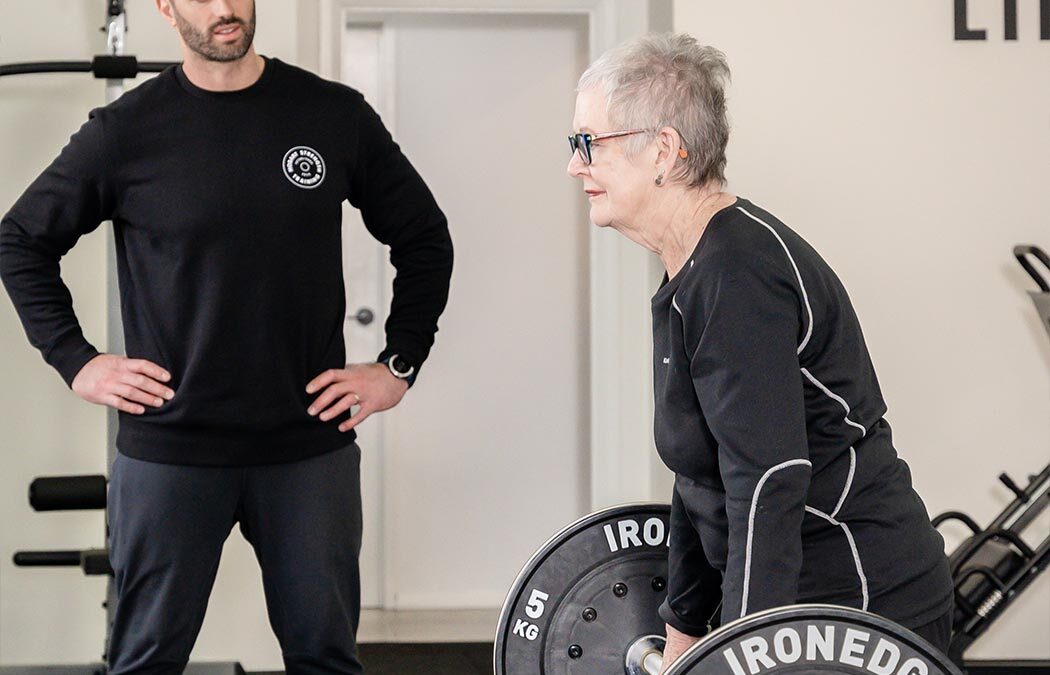Resistance Training Guidelines are relatively consistent across the board on three main points. They are: 1. Perform Resistance Training 2 – 3 times weekly. 2. train major muscle groups across multiple sets. 3. Use “moderate” or “greater” intensities (1, 2, 3). In particular, the AUSactive Exercise Guidelines are relatively comprehensive and provide a fantastic resource if you’re not sure where to start. In fact, unlike many resources, the AUSactive guidelines lay out the beginnings of a proper plan. Today I will run through these guidelines and how to apply them fully, alongside discussing our top five exercises for getting stronger. To begin with, let’s discuss some basic training principles you’ll need to know.
Strong Guidelines
We believe in “principles over methods”. Effective programs understand the interplay of three key variables: Intensity, Volume, and Frequency. Intensity is determined by how close you work to “volitional fatigue,” measured by RPE (Rate of Perceived Exertion). A higher RPE indicates being closer to volitional failure. This simply means stopping a set of reps just before failing the next rep. Volume refers to the amount of work, including sets and reps, and is inversely related to intensity. Simply put, the harder the exercise, the less you can do. Frequency relates to how often you train, often tied to volume. More frequent training allows for more work per week. Understanding these principles is crucial for designing an effective training program.
Our Recommendations
The AUSactive guidelines are relatively comprehensive however at Hobart Strength Training we do recommend three simple changes. Firstly, simplify the RPE scale. The guidelines recommend a scale of 1 – 20, but we believe in a simpler scale of 1 – 10 is more practical. Additionally, this makes tracking efforts over time, simpler. For instance, if you stop a set 2 reps shy of volitional failure, we will call that an “RPE 8”. Conveniently, 10 – 2 equals 8! Secondly, although 8 – 12 reps is a perfectly fine rep range, people can gain strength and muscle across a variety of rep ranges. A comprehensive program will contain a variety of rep ranges that can dip as low into the 3s and bump up above 12! Lastly, we suggest people maintain a full-body program unless they intend on training more than 4 – 5 days a week.
Put guidelines into action
Let’s get to the nitty gritty of it. When Resistance Training Programs say: “train major muscle groups”, what are the best choices? Well, I’m kind of cheating. Rather than specific exercises, we recommend making sure your program is made up of the following movement types:
- A Squat movement: Barbell Squat, Leg Press or Weighted Lunges
- A Horizontal Pressing movement: Bench Press, Push-up, Incline Dumbbell Press
- A Horizontal Pulling movement: Barbell Row, Seated Cable Row, Inverted Row
- A Deadlift movement: Conventional and Sumo Deadlifts, Dumbbell Romanian Deadlift, Hip Thrust
- A Vertical Pressing movement: Push Press, Seated Barbell Press, Seated Dumbbell Shoulder Press
- A Vertical Pulling Movement: Pull-Ups, Chin-Ups, Lat Pulldowns
We have a preference for learning free weight movements, especially with a barbell. Learning how to perform these movements will make you capable at many others, although that relationship isn’t necessarily reciprocal. Moreover, Barbells can be loaded far more accurately due to their design compared to some of the preset loads found with machines and dumbbells.
Finish Strong
A great full body, Resistance Training program will engage someone’s entire body from head-to-toe. Importantly, progression is an important and necessary feature of any Resistance Training program. This means, when someone has met the appropriate intensity and volume prescriptions, an increase in load should occur. If you’re looking to get stronger, build muscle and improve long term health, you can’t just exercise, you need to train with progression in mind. A fantastic 3-Day program can look like the following:
If you’re looking for more explicit guidance and how exercise guidelines can be applied to you explicitly, you can reach out to our team here.


